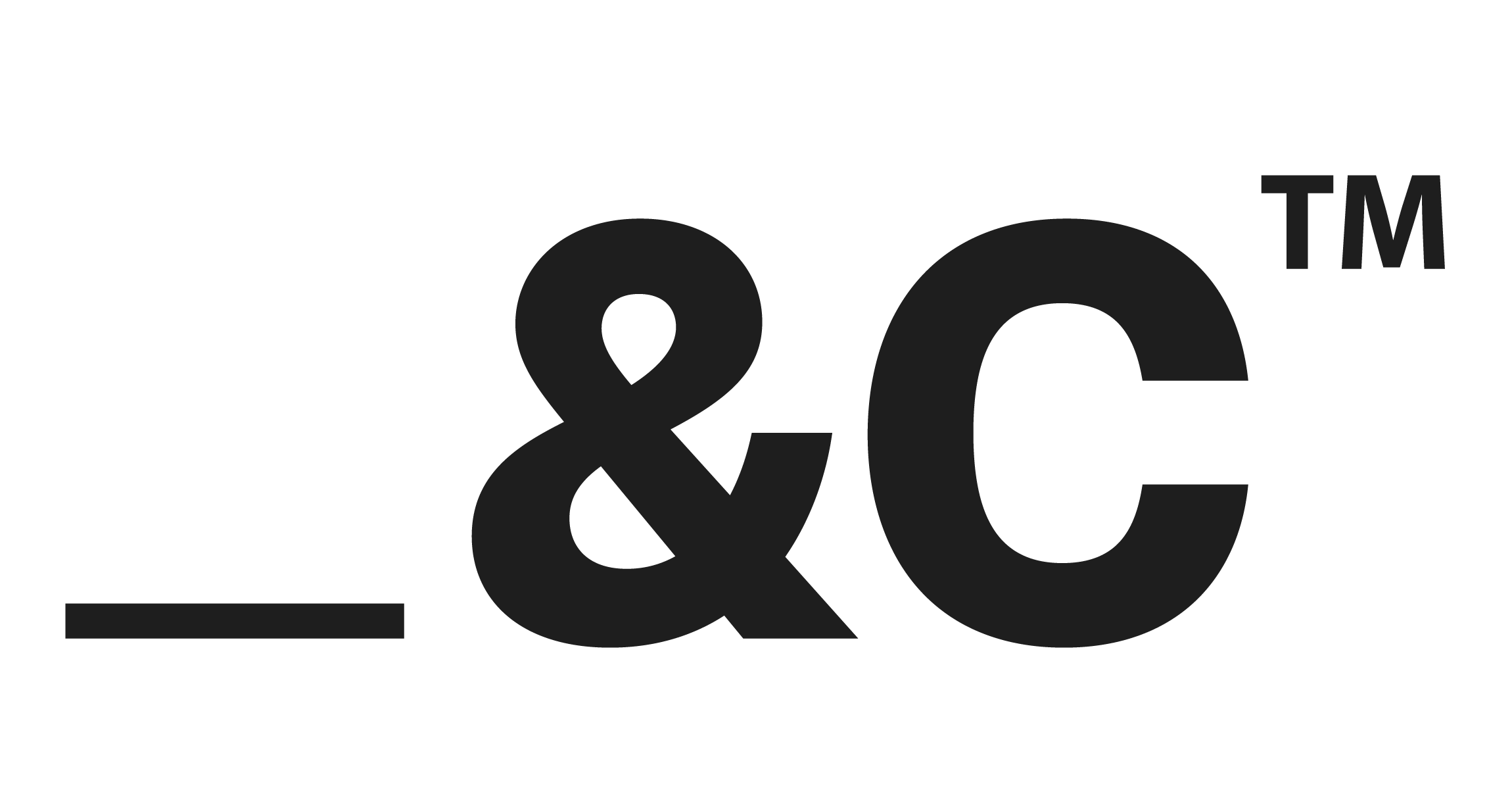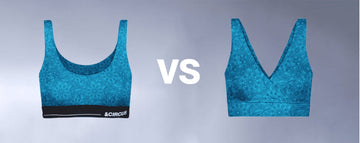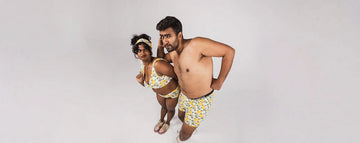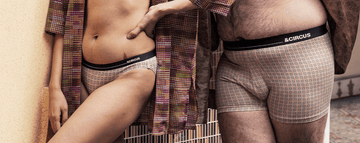Picture this: you're scrolling through Instagram, coffee in hand, and there it is a perfectly curated reel of someone lounging in a buttery-soft, sage-green sweat set, sipping matcha in a sunlit apartment. The caption reads #WFHstyle, and suddenly, you're wondering if your old sweatpants are cutting it anymore. Loungewear, once relegated to lazy Sundays and Netflix binges, has stormed social media feeds, transforming from private comfort to a public style statement. It's not just about staying cozy anymore; it's about looking good while doing it, and the world is taking notice.
Uncomfortable underwear shouldn't steal your confidence. At Andcircus, we craft ultra-soft, sustainable Lenzing Modal Micro® innerwear for every body, XS to 5XL. From briefs to bras, our custom packs fit you perfectly. Shop risk-free with our 100% satisfaction guarantee and embrace comfort that includes everyone. #LoveEveryBody. Shop Now!
Loungewear Rises to Everyday Staple as Social Feeds Embrace Comfort and Style
Loungewear, that sweet spot between pajamas and streetwear, has become the unofficial uniform of the modern era. According to a Market Research Future report, the global loungewear market was valued at $5.49 billion in 2023 and is projected to soar to $15.87 billion by 2032, boasting a compound annual growth rate (CAGR) of 9.71%. The numbers tell a story of a world craving comfort without sacrificing style, driven by the rise of remote work, organized retail, and a growing appetite for versatile clothing. Social media platforms like Instagram, TikTok, and Threads have become the stage where this trend struts its stuff, with influencers and everyday users alike showcasing how to wear loungewear from Zoom calls to coffee runs.
The shift started quietly. A few years ago, loungewear was synonymous with oversized tees and faded sweatpants, meant for the couch and nowhere else. But as work-from-home culture took hold, consumers began demanding more from their cozy attire. A Business Research Insights report pegs the market at $12.91 billion in 2024, with a projected leap to $32.58 billion by 2033, fueled by a 9.7% CAGR. The report highlights how lifestyle changes think hybrid work schedules and a love for athleisure have turned sweatpants, hoodies, and robes into wardrobe MVPs. Cotton, prized for its breathability and accessibility, remains the material of choice, especially for women, who dominate the market with a preference for stylish, premium options.
From Bedroom to Boardwalk: The Social Media Effect
Social media has been the jet fuel for loungewear's glow-up. Scroll through TikTok, and you'll find influencers layering bralettes under blazers or pairing seamless joggers with chunky sneakers for a look that screams effortless chic. Hashtags like #sustainableloungewear and #comfortwear rack up millions of views, reflecting a cultural shift toward clothing that's as versatile as it is cozy. Muted tones, minimalist cuts, and gender-neutral fits dominate the aesthetic, with brands leaning into organic cotton and recycled fibers to appeal to eco-conscious shoppers. The Fundamental Business Insights report forecasts the market hitting $15.51 billion by 2034, with 2025 revenue alone expected to reach $6.46 billion, underscoring the trend's staying power.
What's driving this obsession? It's not just about looking good on camera. The rise of “intentional dressing” choosing pieces that serve multiple purposes has made loungewear a go-to for everything from virtual meetings to casual outings. A sustainable fashion label might showcase a lounge set worn on a plane, then styled with a denim jacket for errands. User-generated content fuels this fire, with real people posting their #OOTD (outfit of the day) looks, giving brands authenticity that glossy ad campaigns can't match. It's a feedback loop: consumers inspire brands, brands inspire consumers, and social media keeps the cycle spinning.
Real Brands, Real Impact
Take a sustainable brand like LUNYA, one of the key players noted in a Technavio report, which predicts the sleepwear and loungewear market will grow by $36.46 billion from 2025 to 2029, with a CAGR of 10.4%. LUNYA's silky, eco-friendly sets have been spotted on influencers who style them for everything from travel to virtual yoga classes. Another example is Victoria's Secret, which has pivoted from lacy lingerie to cozy, body-positive loungewear that resonates with a broader audience. These brands don't just sell clothes; they sell a lifestyle one that's comfortable, sustainable, and camera-ready.
Influencer campaigns amplify this message. Picture a reel where a creator pairs a GOTS-certified cotton bralette with high-waisted trousers and a cardigan, seamlessly transitioning from a home office to a café. These looks aren't just aspirational; they're achievable, encouraging consumers to rethink their wardrobes. The result? Higher engagement, more direct-to-consumer sales, and a stronger brand identity built on transparency and comfort.
The Challenges of Going Green and Cozy
But it's not all smooth sailing. Scaling sustainable loungewear comes with hurdles. Sourcing eco-friendly materials like GOTS-certified cotton or micromodal is pricey and often limited, slowing production timelines. Brands also face the challenge of educating consumers about durability why invest in a $60 organic cotton sweatshirt when fast fashion offers a $15 alternative? Counterfeit products, as noted in the Technavio report, further complicate things, flooding the market with cheap knockoffs that undermine ethical brands. Then there's the push for size inclusivity. The U.S., with its high obesity rate, leads the plus-size loungewear market, yet many brands still struggle to represent diverse bodies in their campaigns.
Despite these friction points, the rewards are undeniable. Comfort-first, seasonless lines foster customer loyalty, as people return to brands that make them feel good inside and out. Lifestyle marketing, fueled by social validation, drives conversions, while innovations like modular sets think mix-and-match tops and bottoms keep consumers hooked. The LinkedIn analysis of the market research industry underscores how data-driven insights, from social media analytics to consumer surveys, help brands stay ahead of the curve.
A Cozy Future Awaits
Fashion analysts see loungewear's rise as part of a broader move toward “intentional dressing.” One expert predicts AI-driven personalization will soon tailor loungewear recommendations to individual tastes, while material innovations like bamboo blends and recycled fibers will push sustainability further. Brands are already experimenting with UGC contests and lounge-focused capsule collections, some even introducing “comfort index” ratings to highlight softness and wearability. The Technavio report points to a future where premium and designer loungewear continues to gain traction, especially as consumers prioritize quality over quantity.
Loungewear's journey from bedroom obscurity to social media stardom is a testament to how we live now craving comfort, versatility, and a touch of style in equal measure. Digital platforms have turned private wear into a public statement, with sustainable brands leading the charge in redefining what everyday essentials can be. As the market surges toward $36.46 billion by 2029, per Technavio, the message is clear: loungewear isn't just a trend; it's a movement. So, the next time you slip into that soft, perfectly fitted lounge set, know you're not just getting cozy you're joining a revolution. Brands, take note: invest in quality, lean into transparency, and keep those feeds buzzing. The future of fashion is looking awfully comfortable.
Frequently Asked Questions
What are the key comfort features to look for in daily lounge wear?
The blog highlights soft, breathable fabrics like cotton blends and modal as essential for everyday comfort. Stretchable waistbands, relaxed fits, and moisture-wicking properties also rank high among user preferences for all-day wearability.
Why is lounge wear becoming more popular for daily use?
Lounge wear is gaining traction due to its blend of comfort, versatility, and style. With remote work and casual living on the rise, many prefer garments that offer ease of movement without sacrificing appearance, making lounge wear a practical wardrobe staple.
How do fabric choices affect the comfort of lounge wear?
Fabric plays a crucial role materials like micromodal and cotton jersey offer softness and breathability, while synthetics may trap heat or irritate sensitive skin. The blog emphasizes that sustainable and skin-friendly textiles significantly enhance the lounging experience.
Disclaimer: The above helpful resources content contains personal opinions and experiences. The information provided is for general knowledge and does not constitute professional advice.
You may also be interested in: How Adaptive Cups in Nursing Bras Support New Mothers
Uncomfortable underwear shouldn't steal your confidence. At Andcircus, we craft ultra-soft, sustainable Lenzing Modal Micro® innerwear for every body, XS to 5XL. From briefs to bras, our custom packs fit you perfectly. Shop risk-free with our 100% satisfaction guarantee and embrace comfort that includes everyone. #LoveEveryBody. Shop Now!







































